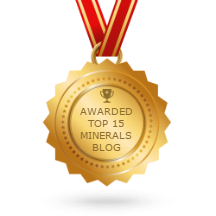Half of this month was spent in Cape Town for Flotation '25. It was a great week, with a record number of delegates, 400 from 32 countries. It was particularly good to see an increasing number of young people, particularly young women, now involved in flotation and we welcomed a new young person to MEI, Amanda's son, Will, who showed enormous potential for taking MEI to the next generation.
 |
| The expanding MEI team |
There were many excellent presentations from young people and four student prizes were presented, from Jim Finch and me, and from Osvaldo Bascur.
 |
| Student prize winners with Jim Finch, Osvaldo Bascur and me |
Following the conference we relaxed for a week at nearby Constantia (posting of 27th November), Jon returning to Luxembourg after a couple of days. We enjoyed some excellent meals in the wine estates and it was good to catch up with Janet Thomas, wife of my old friend Roger Thomas, who was my boss for a short time at Nchanga in 1969.
Grandson Will, meanwhile, had an adventurous day with his friend Dylan from Cornwall. Breaking all the safety rules they hiked up Table Mountain and got lost en route! They then had to make an almost vertical "very scary" and very exposed 300 metres ascent; three and a half hours without water and hoping that the clouds didn't roll down!
 |
| Dylan and another climber on the exposed rock face |
A personal highlight this month was my surprise 80th birthday celebration at the conference dinner at Cape Town's Gold Restaurant (posting of 19th November). Many thanks to Amanda and Jon for arranging this, my biggest ever birthday party!
 |
| Receiving my birthday cake, for some reason shaped as a wine bottle |
And many thanks to all of you who have sent me birthday wishes via LinkedIn and email, particularly those 195 of you who signed my 31 page birthday card and added very kind messages, which I found overwhelming! Here is a link to the card.
All a little premature, however, as my 80th birthday is today! A birthday shared by a very famous Englishman who was born 151 years ago today, Sir Winston Churchill. I've always been interested, since schooldays, in his incredible life, as his biography "My Early Life" was one of the set books for GCE in English Literature. Even back then I was enthralled by his account of hiding in a South African coal mine, owned by a British expatriate, after escaping from a POW camp. Churchill hid in a coal heap and underground shaft for several days while Boer search parties combed the countryside. It must have been a very unpleasant experience in the dark, with only rats for company!
In 1978 I spent several weeks in Witbank, in what was then the Eastern Transvaal (now Mpumalanga), and had the opportunity of entering the mine, the Transvaal & Delagoa Bay Colliery, known locally as the Churchill Mine. Although active coal extraction had ceased in 1953, parts of the mine complex, including the shafts, machinery, and some above-ground structures, still remained intact and were accessible.
Churchill was 90 when he died, despite smoking around 10 cigars per day and substantial amounts of whisky, brandy and champagne, so there is hope for me, as I never smoke cigars.













-EDIT.jpg)
















.jpg)



























-EDIT.jpg)




